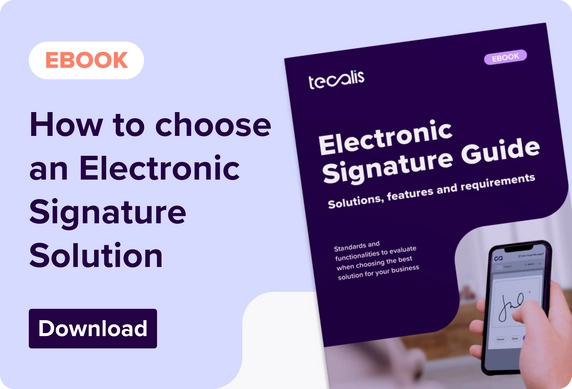Index
Get the latest news right in your inbox
The insurance contract is the most important document within the insurance activity. It includes all the aspects to be detailed between the insured and the insurer as well as the conditions of the agreement and the specifications of the subject to be insured and the events subject to indemnification.
Despite being a well-known document, there are many questions about the insurance contract, especially regarding the policy, the types and their characteristics according to the marketing model.
This time we will take a formal review and analysis of insurance contracts, their features and look at how the new forms of digital contracting being used by the fastest growing insurance companies have boosted trust and customer experience in the industry.
What is an insurance contract
An insurance contract is a document signed by two or more parties in which they agree to indemnification through a capital payment, a service or an annuity when an event specified in this same contract occurs. For this to happen, the policyholder must pay a premium to the other party.
The insurance contract law defines which risks may be covered, prohibiting some and insuring others. Although we have spoken of two main parties, the policyholder, the insured and the beneficiary need not be the same person.
There are slight differences between the insurance contract and the insurance policy: although in many circumstances they are used as synonyms, the fact is that the insurance policy is the specification of conditions with rules of rights and obligations while the contract is the contractual document (generally commercial) where the legal justification committed by the insurer and the insured is framed.
In other words, insurance contracts are consensual and the rights and obligations apply to both policyholders and insurers. The policy can be set up after the contract has been drawn up either as an annex or as an individual contract (albeit linked), including the conditions and data.
Elements and characteristics
An insurance contract consists of several key elements, features and sections. It is important to understand that not all insurance contracts need to be the same, although they must include a series of minimum elements to be considered as such (generally regulated in the insurance contract law).
The intervening parties are the subjects that we can find in a contractual relationship. Namely:
- Insurer: Usually a legal entity that assumes the risks of a third party in exchange for a premium (payment-quota).
- Insured: The owner of the object to be insured. That is to say, when the event defined as risk occurs, it is the party that will be most affected by it.
- Policyholder: This refers to the person who takes out the insurance. He/she has the obligation to pay the premium. It does not have to coincide with the insured.
- Beneficiary: The party who will collect the indemnity from the insurer. In some cases it is different from the two previous ones.

In the most relevant insurance news, we usually find facts about these parties to the contracts. Cases of disputes and identity fraud. Therefore, it is important to understand the role of trusted third parties in insurance contracts. These RegTech partners assist in legal support by validating the identification data of the parties we have just named and ensuring compliance with insurance contract law through KYC, KYB, proxy checks and other systems that enable compliance with associated regulations such as AML6.
On the other hand, we find the basic (real) elements in the insurance contract. If they are not present, the contract will not be considered as insurance (or directly invalid). They would be:
- Premium: The price of insurance (also referred to as consideration) statistically calculates the probability of risk to take shape.
- Risk: An uncertain event (or set of events) that may occur and expose the insured. It must always be random and fortuitous, possible (with probabilities of occurrence, even if minimal), be concretely defined and entail economic consequences.
- Interest: What is threatened by the risk and the economic value of that property. This should include the appraisal and other relevant elements.
- Indemnity as an obligation: A specific clause must be included whereby the policyholder is obliged to pay the premium and the insurer is obliged to indemnify if a loss occurs.
Other formal blocks included in an insurance contract are elementary aspects such as data for the correct identification of the parties (name, surname, company name, address, CIF, identity documents, etc.), reports on the nature of the risks, the policy (explaining clearly and unequivocally the coverages, limitations...), reports on the nature of the risks, the insurance policy (explaining clearly and unequivocally the coverages, limitations...), expert's reports, information on surcharges and taxes associated with the insurance, form of payment of the premium and indemnity, duration, expiration dates, information on the intermediary/brokerage firm in case the latter is the writer of the insurance contract, etc.
Examples of insurance contracts
As we have already seen in our detailed article on the insurance industry, there are many types of insurance depending on the object (and purpose). They are classified in many ways and the law on insurance contracts divides them into those against damages and personal insurance.
We will divide them following this classification and expand to show many examples and types of insurance. Here are a few examples of insurance contracts:
- Insurance against damages, whose purpose is to directly indemnify a loss suffered by returning the economic value by way of replacement. This category includes legal defense, land transportation, fire, theft, loss of profits (loss of economic performance), surety (debtor default), credit and civil liability.
- Personal insurance, regulated in the third article of the Insurance Contract Law. This includes life, accident, health, dependency and death insurance (many of these are considered to be services insurance as they are classified differently).
- Mandatory insurances, being those that must be held by law if a legal or physical person performs any action or has any condition. For example, here we find those of dangerous dogs, vehicles, sports (hunting, diving, skiing), property damage and other types of surety associated with an action or civil liability according to the laws of some areas.
- Other unusual insurances, taking into account that they are exceptions in a market where the previous ones are the most common. Here we can highlight those that are new and possible thanks to new technologies, such as on-off insurance (pay-as-you-go), one-day insurance, real estate title insurance, sweepstakes insurance and human body parts (legs for soccer players, nose for models...). Some insurance classifications also include veterinarians.

Insurance Contract Law
The insurance contract law is the regulatory framework that regulates all formal, contractual and policy aspects in a country or region. The insurance activity is one of the most important in the economy and the main pillar of many entities, not only insurance companies as core but also in traditional banking, so its regulation is specific and broad.
In Europe, insurance regulation varies from country to country, but in general, the European Union (EU) has established a common legal framework to ensure the stability and protection of the insurance market. The EU Insurance Directive, together with specific regulations such as Solvency II, establishes requirements for prudential supervision, insurer solvency and policyholder protection.
In countries such as Spain, it is Law 50/1980 on Insurance Contracts (LCS) that establishes the entire legal system surrounding the contract. Likewise, and in all countries, it is very important to know the jurisprudence together with the insurance contract law, since many supreme courts have established that certain clauses are harmful, abusive and null and void, as well as other limiting clauses as valid.
Regarding Latin America, in Argentina we find Insurance Law No. 17,418, although it is necessary to review all the documentation about resolutions of the Superintendence of Insurance of the Nation. Ecuador is a similar example to Argentina, with a Codification of the General Insurance Law which stipulates that the Superintendence of Companies, Securities and Insurance is the one that defines the standards of insurance contracts with specification of clauses.
Colombia, for its part, uses Title V of the Commercial Code to establish the bases and Chile does the same but in its case in Book II of its homologous law, as does Bolivia in its Article 1013. These are examples where there is no specific regulation on an insurance contract law but the framework is in the legal system of the market through its general Commercial Codes.
In the United States, insurance regulation is primarily the responsibility of the states. Each state has its own insurance department that oversees and regulates the insurance industry within its borders. At the federal level, the Insurance Modernization Act of 1999 (Gramm-Leach-Bliley Act) also has a significant impact on the regulation and privacy of financial information.
Other relevant countries also have their own specific regulations. For example, in Canada, insurance regulation is carried out by individual provinces and territories, while in Australia, the Prudential Regulation Authority oversees the insurance industry.
The Insurance Contracts Act requires the inclusion of the data, concept, nature, designation, amounts or scope of coverage and maturities in the policy. Generally, the first articles of the insurance contract law summarize all the basics and contain the key elements.
Fortunately, RegTech players are actively helping insurers comply with regulations such as insurance contract law and data protection regulations in many countries. In many instances, they provide digital solutions that automate regulatory compliance in contract drafting, signing or any other associated process.

How to buy insurance: improving the customer experience
As we have seen, InsurTech has redefined the insurance ecosystem. No longer just in business models, but also in how processes are performed. In today's digital era, Qualified Trust Service Provider (QTSP) solutions are playing a key role in the evolution and efficiency of the insurance industry. In particular, tools such as digital onboarding, KYC (Know Your Customer), e-signature and e-notifications are revolutionizing the way insurance companies manage their processes, from customer acquisition to contract management. In the following, we will explore how these solutions are intervening in the insurance industry and significantly improving the experience for both insurers and policyholders:
Digital onboarding has radically simplified the customer onboarding process in the insurance industry, automating AML checks and making identity documentation collection fast and validated. By digitizing information collection and identity verification, insurers can streamline decision making and offer customers a faster and more convenient discharge experience. This not only reduces friction at the beginning of the customer relationship, but also ensures the accuracy and validity of the information collected in the insurance contract.
On the other hand, it should be noted that the insurance contracting process does not usually begin directly with the signing of the contract. As a general rule, before signing the contract, the insurance company, broker or agent provides an informative document with general information about the contract and the policy. In this use case it is very important to safeguard the delivery of this document, so eIDAS electronic certification solutions are usually chosen to generate traceability and evidence of this operation, backing up the process. Other use cases of certified notifications in relation to insurance contracts are:
- Renewals, updates and modifications: Insurers may use certified notices to inform policyholders of policy renewals, as well as any changes in terms and conditions. When there are changes in coverage or policy conditions, certified notices ensure that policyholders are properly informed and that there is a legal record of the communication.
- Claim receipt confirmation and status notifications: When an insured files a claim in relation to the insurance contract, the insurer can send a certified notice to confirm receipt of the claim, providing a clear record of the start of the process. Status updates, such as approvals, payments and settlements, can be communicated through certified notices, providing transparency and complying with the regulatory requirements of the insurance contract law.
- Reminders of payments, cancellations and maturities: Insurers use electronic notifications to send reminders of outstanding payments, ensuring they are aware of due dates and avoiding potential interruptions in coverage. In the event of non-payment, the certified notice can be used to inform policyholders of the cancellation of the policy, complying with legal requirements and providing evidence of notification.

The insurance contract, reaching new markets
Insurance contracting has undergone a remarkable transformation by expanding into disruptive points of sale, such as shopping malls and agents located anywhere, thanks to innovative tools such as Customer Hub.
This comprehensive software gives insurance agents the ability to enroll insurance anytime, anywhere, eliminating geographic limitations and enabling adaptation to unconventional environments without sacrificing security or insurance law compliance. The flexibility of Customer Hub provides agents with the tools necessary to deliver personalized services to customers in real time, taking advantage of mobility and immediacy.
This new way of contracting not only drives accessibility for consumers, but also redefines the customer experience by seamlessly integrating technology into non-traditional points of sale to activate insurance on the spot, opening up new possibilities and accelerating the insurance industry's expansion into innovative spaces.
Electronic signature for insurance contracts
Electronic signatures have drastically simplified the process of formalizing insurance contracts. By allowing policyholders to sign documents digitally and securely, it eliminates the need for manual paperwork and speeds up processing times. This method not only improves operational efficiency and reduces costs for both insurers and brokers, but also contributes to more sustainable practices by reducing the use of paper.
The insurance contract can be in word or pdf and now there are electronic signature solutions such as Tecalis Sign that include GPT technology for the drafting of insurance contracts. In addition, the different industry players can choose how to work with this tool: through their own systems (with API integration) or with a web platform that is totally simple and easy for the less digitized to keep track of all insurance contracts made, sent and signed, as well as notifications and communications certified through any physical or digital channel.
Finally, online insurance contracting has become a reality thanks to digital onboarding and electronic signatures. Customers can complete the onboarding process from the comfort of their devices, avoiding cumbersome procedures and long waiting times. The same is true for call-center agents, who can send contracts in digital format for signature via phone call. The necessary information is collected efficiently, and documents are digitally signed in compliance with insurance contract law, enabling a streamlined and secure contracting experience. This approach aligns with the modern expectations of consumers seeking simplicity in their dealings.
The full integration of these technologies in insurance contracting is not only the next logical step, but is already a reality in most insurance companies. The key differentiator is to have a powerful, secure, affordable and affordable tool focused on the insured's signature. Artificial intelligence and automation will continue to play a crucial role, anticipating customer needs and further simplifying processes. The combination of the efficiency of digital onboarding, the security of KYC, the agility of e-signatures and the immediacy of electronic notifications positions insurance underwriting as a fast, secure process adapted to the demands of the digital world.


























